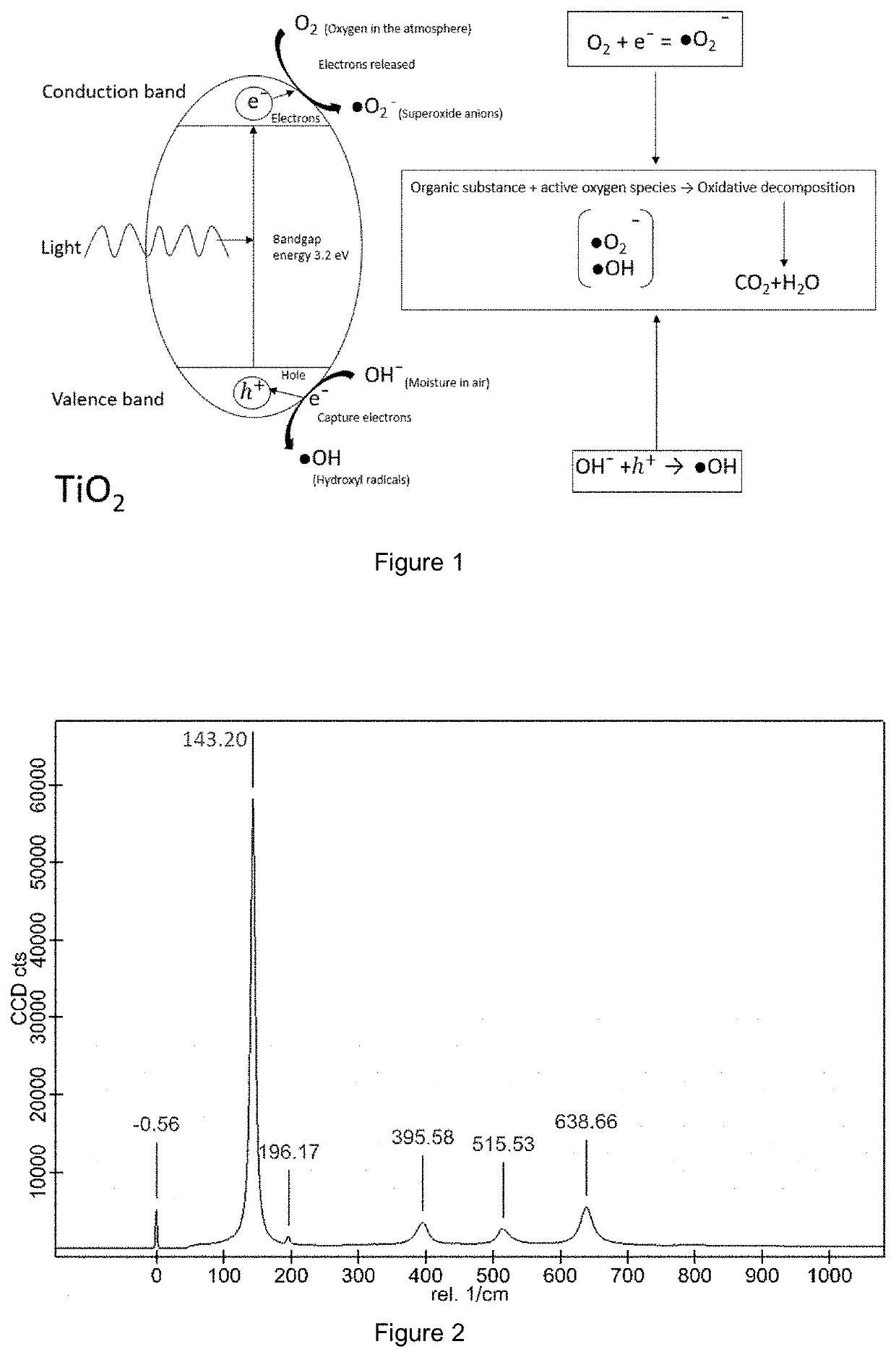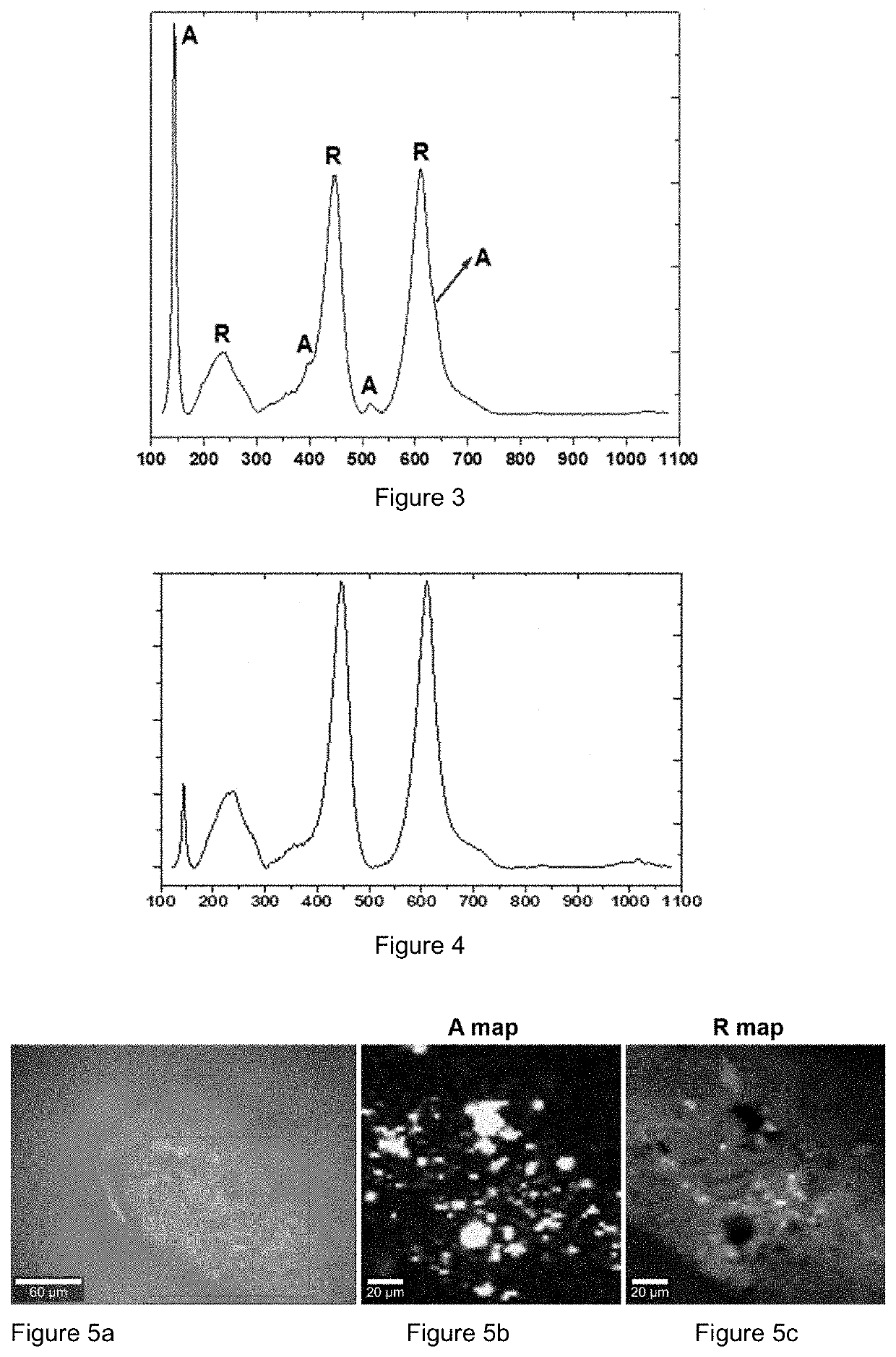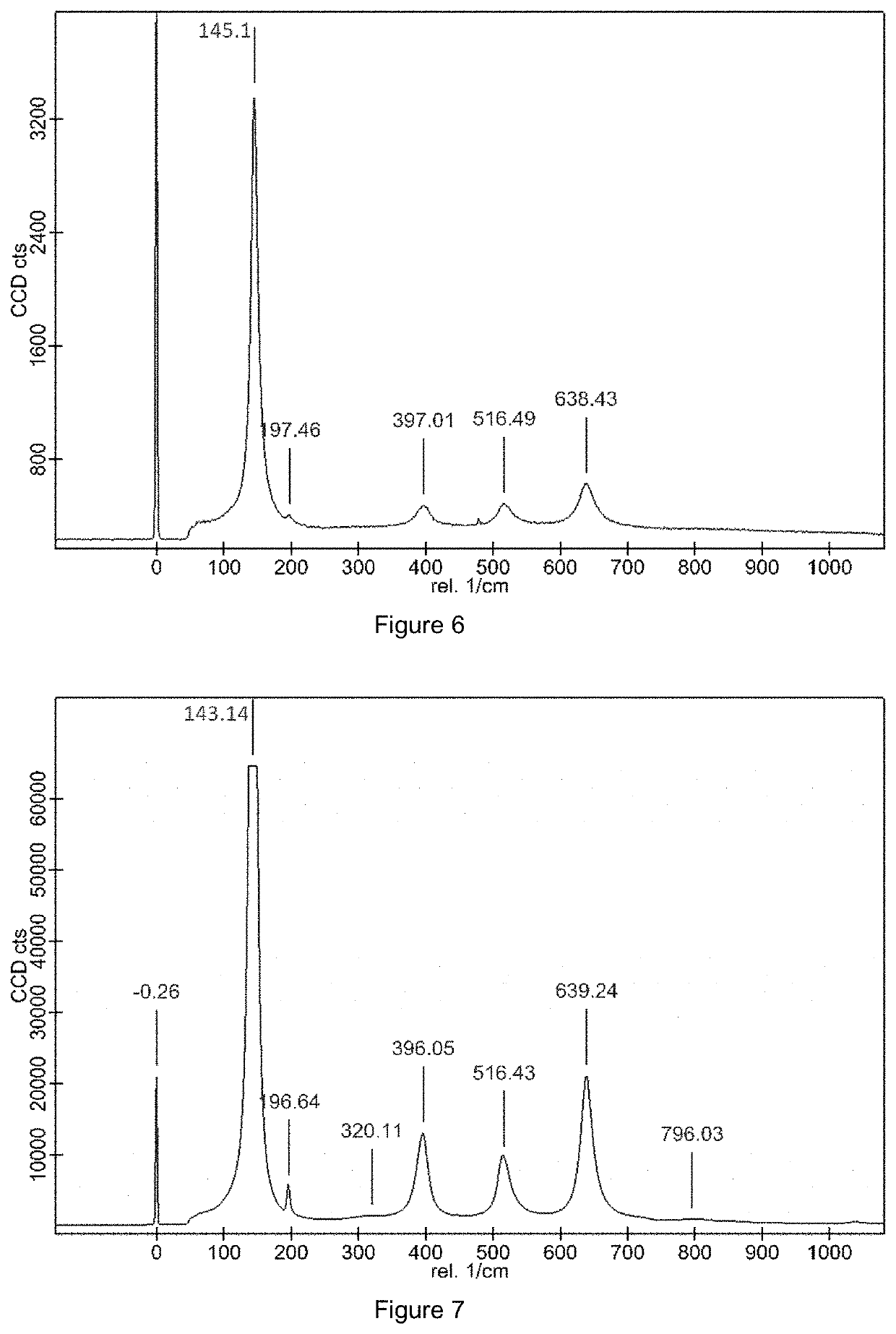P-doped surface coatings and process of preparation thereof
a technology of surface coating and pdoping, which is applied in the direction of biocides, coatings, liquid/solution decomposition chemical coatings, etc., can solve the problems of increasing ‘carbon foot print and higher cost, and achieves reduced bandgap energy, less acidic, and improved doping efficiency
- Summary
- Abstract
- Description
- Claims
- Application Information
AI Technical Summary
Benefits of technology
Problems solved by technology
Method used
Image
Examples
example 2
[0100]KCS111:[0101]1. 10 mL TTIP was placed in a polypropylene beaker.[0102]2. 19.2 mL glacial acetic acid was added while stirring.[0103]3. 0.14 mL 86% orthophosphoric acid (aqueous) was added while stirring. A small quantity of white precipitate began to form.[0104]4. 120 mL deionised water was added while stirring and the mixture stirred for a further 40 minutes. A sol with a translucent milky white appearance was formed and the precipitate previously formed re-dispersed, which was then bottled.
example 3
[0105]KCS112:[0106]1. 10 mL TTIP was placed in a polypropylene beaker.[0107]2. 19.2 mL glacial acetic acid was added while stirring.[0108]3. 0.5 mL 86% orthophosphoric acid (aqueous) was added while stirring. A larger quantity of white precipitate began to form than in the case of KCS111.[0109]4. 120 mL deionised water was added while stirring and the mixture stirred for a further 40 minutes. A sol with a translucent milky white appearance was formed, that was denser in colour than KCS111, which was then bottled.
example 4
[0110]Example 4 describes an alternative embodiment, wherein the order of addition of the reagents is as follows:[0111]a) TTIP[0112]b) Glacial acetic acid[0113]c) De-ionised water[0114]d) Orthophosphoric acid (aqueous)[0115]A dispersing agent may be added following the addition of orthophosphoric acid.
[0116]KCS117:[0117]Orthophosphoric acid can be added after the addition of the deionised water to the glacial acetic acid / TTIP mixture.[0118]1. 10 mL TTIP was placed in a polypropylene beaker.[0119]2. 19.2 mL glacial acetic acid was added while stirring.[0120]3. 120 mL deionised water was added while stirring and the mixture stirred for 20 minutes. A sol with a translucent milky white appearance was formed.[0121]4. 0.14 mL 86% orthophosphoric acid (aqueous) was added while stirring. A small quantity of white precipitate began to form. The sol was stirred for a further 40 minutes and this precipitate re-dispersed.
PUM
| Property | Measurement | Unit |
|---|---|---|
| temperature | aaaaa | aaaaa |
| temperature | aaaaa | aaaaa |
| temperatures | aaaaa | aaaaa |
Abstract
Description
Claims
Application Information
 Login to View More
Login to View More - R&D
- Intellectual Property
- Life Sciences
- Materials
- Tech Scout
- Unparalleled Data Quality
- Higher Quality Content
- 60% Fewer Hallucinations
Browse by: Latest US Patents, China's latest patents, Technical Efficacy Thesaurus, Application Domain, Technology Topic, Popular Technical Reports.
© 2025 PatSnap. All rights reserved.Legal|Privacy policy|Modern Slavery Act Transparency Statement|Sitemap|About US| Contact US: help@patsnap.com



